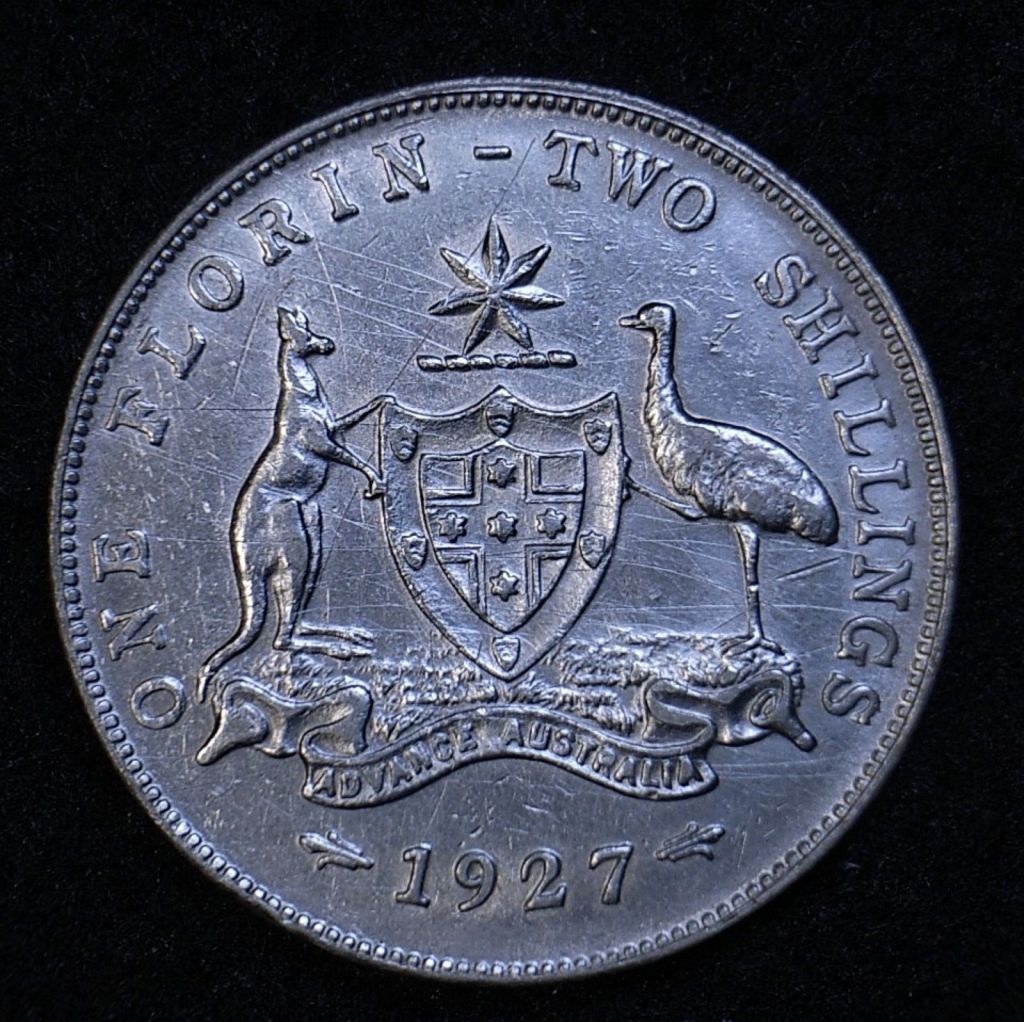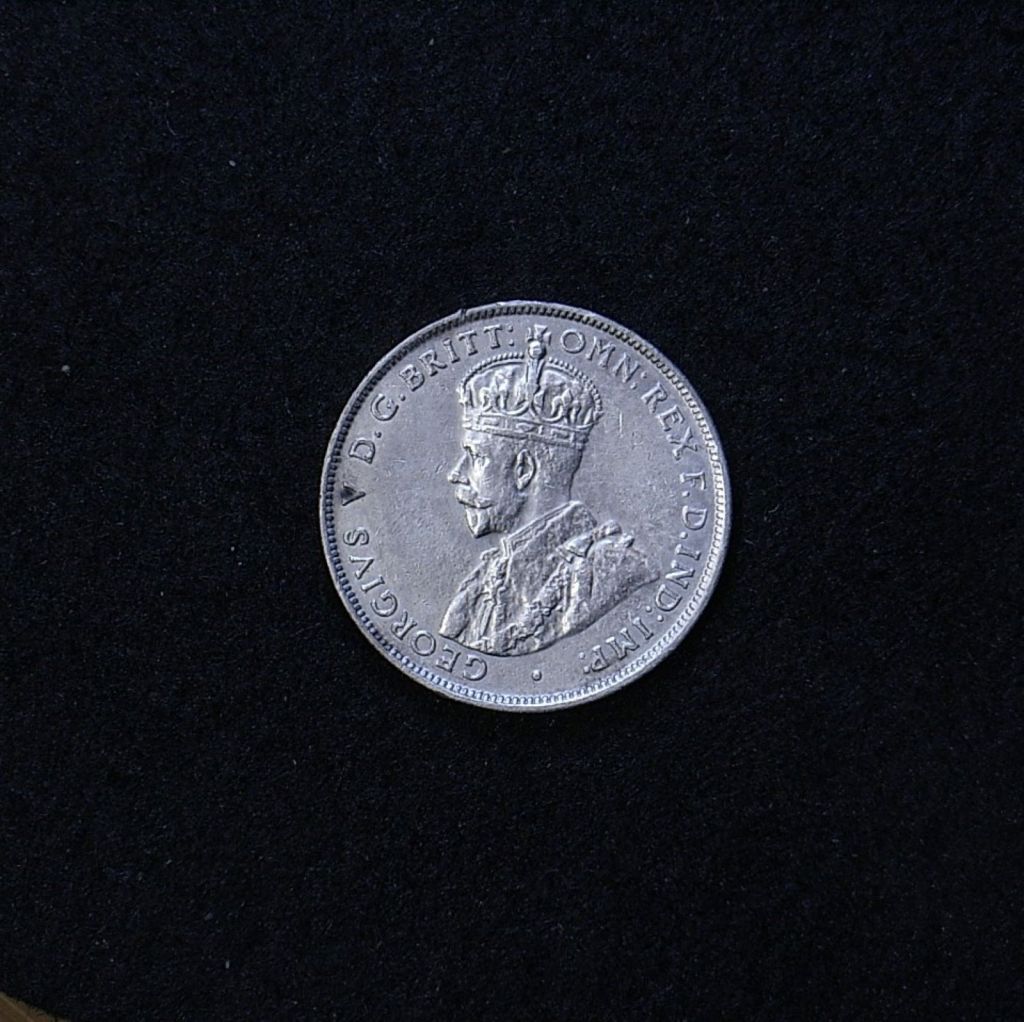- Here’s a sequence of photographs of a coin that’s pretty high grade…
- And the other side
- OK…, Tails looks ok!
- But heads…
- Allowances
- ‘Uncirculated’…?
- ‘Bagmarks’
- All important level of wear
- Overall appearance
- Shininess!
Here’s a sequence of photographs of a coin that’s pretty high grade…



In this sequence of photographs, all of the same coin – the lighting conditions are provided primarily by two halogen led lamps. [the general background one has a more yellowy shade whilst the directional spot is a bright white, both in the cool daylight range].
When directed at three different angles, the difference in the photos is quite amazing, really!
Here are the results at higher magnification, (all else roughly equal).



And the other side





OK…, Tails looks ok!
In hand the coin is bright, particularly the reverse which unfortuately has a fair few hairline scratches across wide portions of the fields… occasionally through the relevant part of the design, too.
Ah well, can’t have everything!
But heads…
The obverse is marred by spot tone at “V” of “IVS V” and an edge nick at “BRITT”, otherwise it’s looking around aUnc but for the lack of lustre (which means it can’t be better than EF+ (!!!) this side).
There are eight clearly separated pearls and a full central diamond in the region of the crown band, though.
Allowances
Anyway, when coin grading, you just have to allow for some leeway – after all everyone has their own opinions; coins are quite personal items and what may be attractive, for example, toning or even scratching to one may put someone else off altogether.
Also, it’s usually very clear straight away if a coin falls into the low or high end of the grades.
The sticking point often comes up when trying to decide if you’re dealing with something that can be classed as uncirculated, or not.
The coin in the photos is almost there, but just not quite – what should we pay attention to when figuring out its grade…
‘Uncirculated’…?
First of all, it’s worth noting that the coin grade ‘uncirculated’ does not mean that the coin has never been put into circulation and used to buy stuff. Really all it means is that following production the piece has pretty much hardly been used and consequently shows almost no wear on its surfaces.
‘Bagmarks’
Remember that in many instances the manufacturing process involved finished coins rolling and sliding down metal chutes into big bags before being shifted around and transported, or sometimes put into storage. Certainly this was the case in early 20th century Australia and so it’s difficult to find totally fault free florins which is why many classed in the ‘uncirculated’ category exhibit tiny nicks and scratches.
Wear is the key idea – and knowledge of the typical pattern of wear for a coin type is essential for accurate assessment of the grade.
The 1927 florin pictured presents a possibly ‘Unc’ grade reverse, however the lustre, which in this example is present but well muted – there is no cartwheel effect – lets it down. And then the scratches ! At least they appear to be the result of how the coin was made…
Heads side, lustre is even more lacking – still the coin is definitely EF, maybe a bit better for wear – but, what puts me off is the edge nick (ah well…). Still a good coin though!
All important level of wear
For Aussie pre 1936 florins (the KGV portrait ones, similar to that pictured) it’s pretty much agreed that the highest point on the obverse is the crown band where the central diamond, pearls and rubies appear – and wear begins over that diamond before spreading out to consume the smaller dots on either side, usually the left hand gems disappear first, followed by those on the right. The ANDA pdf is a good resource.
You want to check the state of the area around the central diamond and also pay attention to the condition of the moustache tip and the top of the ear (all of which I think are only slightly worn here).
On the reverse, the first parts to lose their sharpness are the star, the top portion of the kangaroo and the back of the emu (all affected here).
Overall appearance
To avoid getting carried away by going immediately to those quite small regions, it’s well worth taking in each side of the coin as a whole – noting any nicks or dents around the rim in addition to detracting marks like scratches over the design or in the fields (the flat areas forming the background to the portrait).
Asssessing the ‘big picture’ first gives you a good initial idea of the grade and guards against missing a slight edge nick – which may only be really visible at certain angles – before getting excited over the presence of eight clearly separated pearls and nice cartwheel lustre!
Shininess!
Lustre, or mint bloom, is a specific type of shine imparted to the metal as a result of going through the press – the grain of the metal becomes highly ordered so that light is reflected in a distinctive way creating the rolling or cartwheel pattern.
As the coin is increasingly handled, the original reflective surface is impaired – I think it’s initially from oils and moisture imparted by peoples’ fingers reacting with the silver, but many very fine scratches (hairlines) – often from the edges of other coins in the sack – act to destroy the lustre, too, which eventually is left as a remnant under the legends (lettering) close to the rim.
Happy Collecting!
You must be logged in to post a comment.